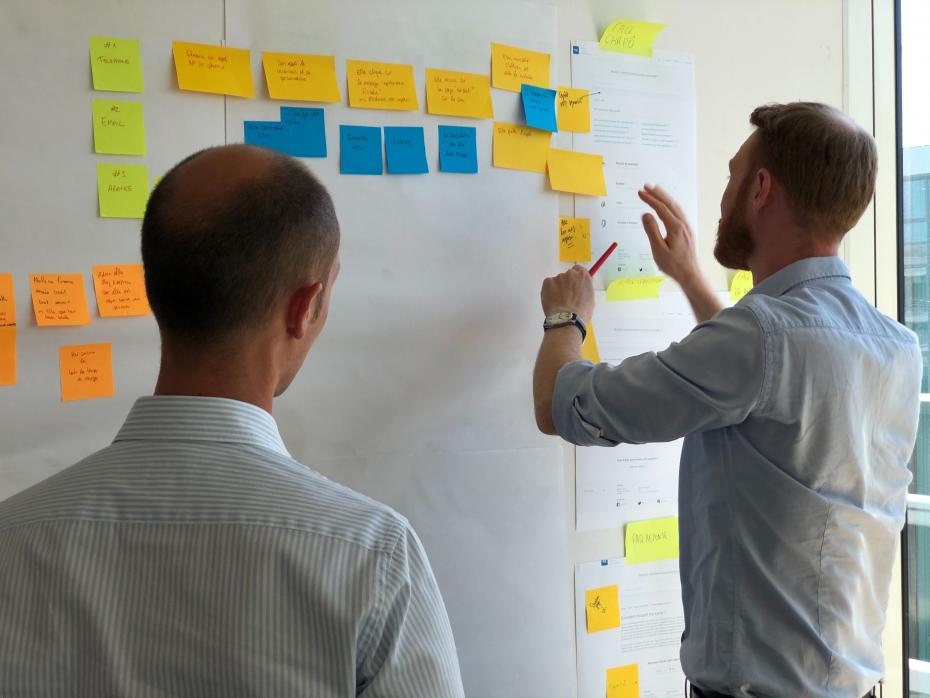DON’T PANIC!
Creating your own “Hitchhiker’s Guide to Curriculum Design” is a way to make curriculum design and its logic accessible to all colleagues, whether academic, technical or professional, thereby ensuring a joined-up approach that supports a positive student experience.
The rationale is simple
Your hitchhiker’s guide should distill the overload of information and advice around curriculum design, extracting the elements relevant for your teaching, to create a “living checklist” for all the little crinkly bits around the edges of curricula that are often overlooked.
- A guide to effective digital course design and delivery from four online teaching experts
- How to support staff across all departments to design quality online courses
- Creating a centralised advice resource to help faculty adapt to new teaching modalities
Your “living checklist” helps create a scaffold for learning, teaching and decision-making on practical details such as when to seek involvement from external examiners, bring in the student voice or invite collaborators. The best way to create your hitchhiker’s guide is to have discrete chapters so readers can either dip in to find specific advice, read sequentially, or anything in between, to help them as they design.
Chapter structure is key and should mirror your learning design process, the timeline of your curriculum decision-making and planning. By way of a starter for 10, how about:
Introduction: I’d far rather be happy than right any day
The introduction should hold all the strategic, big-picture and infrastructure information with links to policy documents. For example, it should outline the credit structure, any shared modules and link to policies on learning and teaching strategy, inclusivity and accessibility to stimulate thinking.
This chapter sets out your institutional values and ambitions as well as the professional services support available, such as student records and curriculum management system information needed to get the curricula underway.
It’s also a great place to de-escalate the cliff-face that is curriculum designing from first principles, by drawing together strategic and curriculum support information so the designer is working within the wider institutional context from the start. In doing so, time will be saved as clear information will free up the designer to focus on impactful pedagogies and content.
Planning: Fail to plan, plan to fail
As an example of the “living checklist” concept in action, a list like the one shown below should be built into the start of each chapter so that your hitchhiker’s guide can be used in multiple contexts to help scaffold the fine detail as your curriculum takes shape.
Key considerations for a living checklist:
Student voice: Co-creation of curricula with students is a critical factor in success and the earlier students are included in the design process, the better.
In-house skills: Within the personnel infrastructure of your institute, there are myriad skills you can access to aid curriculum design. From project management to innovative assessment modes, use the people and skills close at hand as a first step before looking outwards.
Timeline and governance: Universities are cyclical institutes, and it is as important to know “when” as it is to know “how” when it comes to curriculum design. The governance and committee structure timelines are a key factor in a smooth curriculum journey from planning to implementation.
The common modules: If you have any centrally curated or capstone modules that must be woven into your curriculum, this is the time to include these to align them with your learning outcomes and decide what or how they will run to aid a positive student experience.
Infrastructure: Drawing on information from your introduction, the credit structure, course or module lengths, semester patterns and other structural factors are important to consider early because they will inform learning and teaching decisions you make in subsequent chapters.
Digitally enhanced learning: In the post-Covid world, whether it’s full blended learning or more digitally enhanced learning, it is imperative you consider and can articulate how digital will be used to enhance the student learning experience.
Content production: “Content” covers the digital and the practical, ideally offering any institutional guidance to have in mind early in the curriculum design process, such as accessibility or file size.
External examiners engaged: The mantra “it’s never too early” is a good one to have as your external examiners constitute a valuable resource to sense check and advise you when designing an innovative curriculum within a disciplinary context.
Staff development: The other side of curriculum innovation is evaluation and the staff development opportunities inherent in designing, testing and evaluating a cyclical curriculum, which should be linked to scholarship of learning and teaching as closely as possible from the outset.
Opportunities: Looking for opportunities for peer support or opportunities to network and discuss, including links and information to “sharing” curriculum design practice, means you advance the institutional knowledge in a collegiate and transparent way.
Design: Innovative, by design
Your design chapter should be unapologetically learning and teaching centric, meaning this is where you get into the fine detail surrounding your instructional approach, from assessment choices and learning outcomes to the pedagogy of learning delivery, in other words constructively aligned or problem-based. Curriculum narratives and key sector drivers such as employability and sustainability should also be included in the planning so they are embedded into your evolving curriculum, rather than bolted on, creating a smoother student journey.
Assessment and feedback: “Once you do know what the question actually is, you’ll know what the answer means.”
Rather than using this chapter solely to curate your existing assessment regulations, you might find it useful to explore the guide users’ thinking and decision-making, this could be the curriculum designer or teaching colleagues who might seek advice in your guide. Linking assessment design considerations and desired outcomes to your institutional scholarship and educational research drivers will allow you to treat this chapter like a pause or reflection point as you explore best practice, support available and new insight on assessment and feedback practices.
Delivery: “For a moment, nothing happened, then, after a second or so, nothing continued to happen”
It may not be the biggest or most detailed chapter of your hitchhiker’s guide, but arguably it is the most important, focusing on the delivery of your curriculum. If it’s going to help you and your colleagues deliver life, the universe and everything by way of your course, it needs input from curriculum designers to draw together scholarship with all the implementation logistics, such as timetabling, staffing and student inductions. We included institutional ethical applications in this chapter too. It’s here you may decide to place your annual curriculum milestones, such as approval and exam board timings, and the professional services such as quality assurance, student records, digital and IT tools, that support them. When thinking about “delivery”, the key is to consider the linear progression of the student journey through your curriculum and use that to inform where you allocate resources.
The answer to the great question is…
There we have it, a whistle-stop breakdown of a suggested Hitchhiker’s Guide to Curriculum Design, which can be used to inform curriculum reframing at an institutional or individual level. We would be happy to share our particular approach and the lessons learned with any who might wish to grab their towel and join us. So long, and thanks for all the learning.
Russell Crawford is director of learning and teaching at Falmouth University.




comment